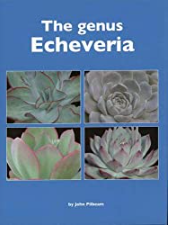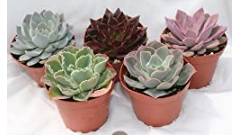Slender, Chubby, Sleek, Carunculated, Fuzzy and Tough
As an Amazon Associate I earn from qualifying purchases.
Other links on this site may lead to other companies that I’m associated with.
Here are a few tips on how to grow these unique beautiful succulents:

In many places in Canada and other northern climates, it’s too cold for the winter months to keep Echeveria outside, as they originate in Mexico and
other places where it stays warm all year and there is no risk of frost.

However, you can keep Echeveria happy as houseplants for the winter, and then gradually move them outside for the summer once the weather settles and there won’t be any frost at night.
They make superb container plants for a warm deck or patio.
Light Requirements for Echeveria
Echeveria species were discovered growing naturally in warm climates with lots of sun, so they have adapted to a warm bright environment.
The species and the many beautiful Echeveria hybrids derived from them all require similar care.
However, even though Echeveria prefer bright light, putting them directly into full sun for the summer months can be stressful for them, as well as causing sunburn.
Gradually acclimatize them by putting them in an area that gets only morning sun for a few hours a day, and increase it over a week or so until they’re in full sun.
Avoid afternoon sun altogether as the foliage will burn and stress the plant out.
If the foliage gets sunburned, the best thing to do is behead the plant, and grow a new one, taking off the damaged leaves.
If it’s not too badly damaged, the leaves can be used for propagation.
In the winter, the brightest window you can supply will be fine, or grow them under fluorescent grow lights on a twelve to fourteen hour schedule.
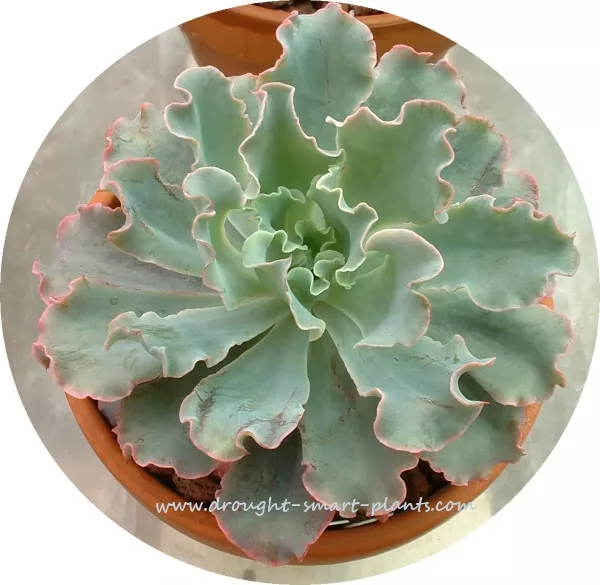
Best Temperatures for Echeveria
Echeveria can survive quite a range of temperatures, although there is a lot of difference between varieties and species.
Most Echeveria and other succulent plants are happiest in a fairly warm, dry (not humid) climate, and prefer about ten degrees of difference between day and night temperatures.
In the winter, many are quite content in very cool conditions, down to about 4-6 degrees Celsius at night, and up to around 15 degrees Celsius during the day.
In summer, they can take quite high temperatures, especially in a greenhouse situation. However, it is best if they have some shade if the temperatures are over 30 degrees Celsius.
Most plants shut down and stop respiring above 30 degrees, to open their stomata to breathe again once night falls and temperatures drop.
Many succulent plants, including Echeveria have strategies such as a waxy coating on the leaves, or a covering of hairs to prevent too much water loss.
Buy your supplies here;
Watering Echeveria
Water according to the temperature, as Echeveria will need much more water in the full heat of summer, and lots less when it’s cool or rainy.
The best water to use is rainwater captured off a roof as it doesn’t have the minerals that can mar the bloom or pruinose on the leaves of Echeveria and other succulent plants.
Watering Tips for Echeveria
Never use water from a water softening unit, as salt kills plants.
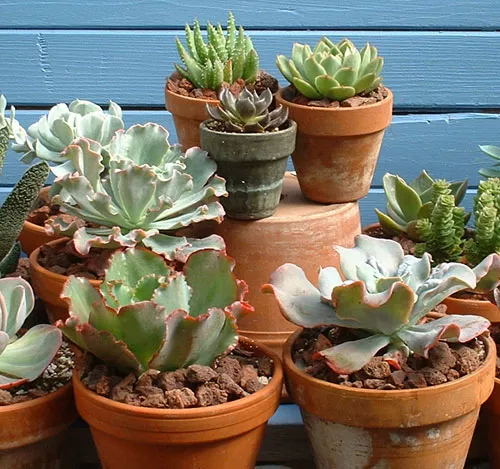
- To water Echeveria properly, completely wet the soil all the way through by watering thoroughly a couple of times.
- This ensures that the whole soil column gets wet.
- Then allow it to dry completely before watering again for healthy roots.
- Avoid keeping the soil damp, and always use fast draining soil.
I also recommend using tempered water for watering Echeveria. It makes sense that there is less potential for root rot if the water is warmed.
Never let the soil stay wet for long periods, or let the plant sit in a saucer of water.
Echeveria Soil
Soil for Echeveria has to be very well drained, as too much moisture accumulating in the lower levels of soil can cause root rot.
I use a peat based commercial mix with extra aggregate for more rapid draining. You can use a sterilized potting mix without additional fertilizer and add at least half turkey grit or other small gravel, or pumice.
Some growers have discovered that Echeveria don’t like an alkaline soil, but in most cases it’s not an issue unless your water is also very alkaline. If this is the case, collect your rainwater for watering – it’s best for plants anyway.
Avoid fine sand unless it’s graded out to take any silt or dust out as this can clog up the pores in the soil.
In some cases, Echeveria can sicken from the breaking down of the soil; to prevent losing your plant to this syndrome, propagate your plant while it’s still healthy so you have one to take its place.
Fertilizer for Echeveria
Echeveria rarely need fertilizer. If your plant seems a little pale and lethargic, use a water soluble fertilizer mixed about half strength, and less often than recommended.
I find worm castings sprinkled on the top of the soil gives them all the nutrients they need, and it slowly releases them over months and never burns.
Cultivation of Echeveria is challenging due to the steep learning curve – they are very different from other houseplants that you may be familiar with, but once you get the hang of it, you’ll have happy healthy Echeveria filling every window and your patio or deck in the summer with much less watering to do.
See this page on Best Fertilizer for Succulents.
Best Pots for Echeveria
Terracotta clay pots and other pottery containers are among the best for Echeveria. The ‘tooth’ or unglazed interior gives the roots something to cling to, and the porous wall of the pot allows excess moisture to escape, leaving the soil dry as these xerophytes prefer. See more exciting ideas on the containers for succulents page.
For more Echeveria care tips visit this site (link opens in a new window).
How to Get an Echeveria to Flower
Or is it, how to prevent an Echeveria flowering.
The blooming cycle is built in, and any Echeveria that has the right conditions (light, both length and intensity, watering when dry, and soil that is well drained and porous) once it gets old enough, the flower stalks will emerge from the center of the plant, like clockwork, every year.
Most species bloom at the same time of year, usually at the end of the summer.
This varies though. I’ve had Echeveria shaviana blooming in August, and other species, like Echeveria ‘Black Knight’ that show their flowers in November.
The blooms last a few weeks, and open in succession on the spray. This is so that there is time for insects (or you) to pollinate them.
Once the flowers start to fade, this is how to deal with it.
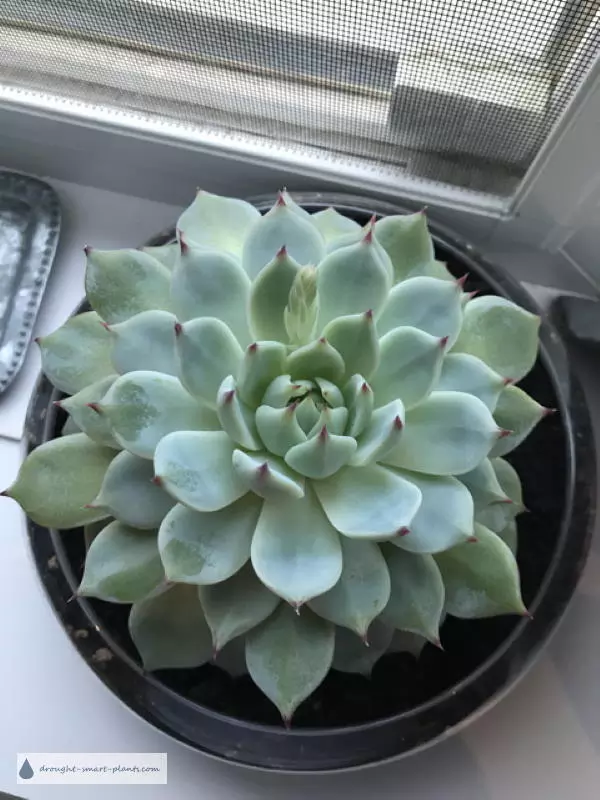
Echeveria starting to flower – see the tiny flower buds at the top?

Echeveria ‘Bertha’ starting to flower – the stalk is long enough to start arching


